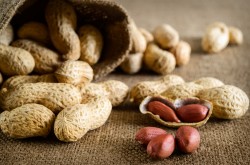Because it is sourced from natural safflower oil, Tonalin® is natural and environmentally sustainable. The proprietary manufacturing process produces the highest quality CLA available. Tonalin CLA is a safe, scientifically proven, effective nutritional supplement that contains no stimulants of any kind. It is the world’s most carefully researched CLA, with currently 18 major studies proving its safety and effectiveness.
The U.S. Food & Drug Administration has recognized Tonalin® as FDA GRAS, which means it has passed their highest safety standards for a food ingredient.
Why did you choose TLS Tonalin® CLA? Tell us in the comments section below!
Reference:
- Thom, E., et al. Conjugated linoleic acid reduces body fat in healthy exercising humans. Journal of International Medical Research. 29(5): 392-396, 2001.
- Steck, S., et al. Conjugated linoleic acid supplementation for twelve weeks increases lean body mass in obese humans. Journal of Nutrition. 137(5): 1188-1193, 2007.
- Blankson, H., et al. Conjugated linoleic acid reduces body fat mass in overweight and obese humans. Journal of Nutrition. 130(12): 2943-2948, 2000.
- Gaullier, J., et al. Supplementation with conjugated linoleic acid for 24 months is well tolerated by and reduces body fat mass in healthy, overweight humans. Journal of Nutrition. 135(4): 778-784, 2005.





Comments (0)